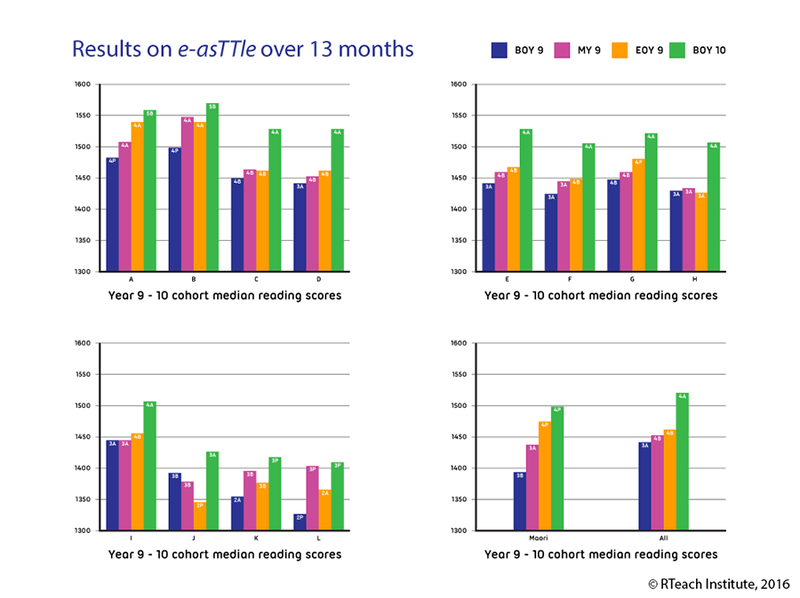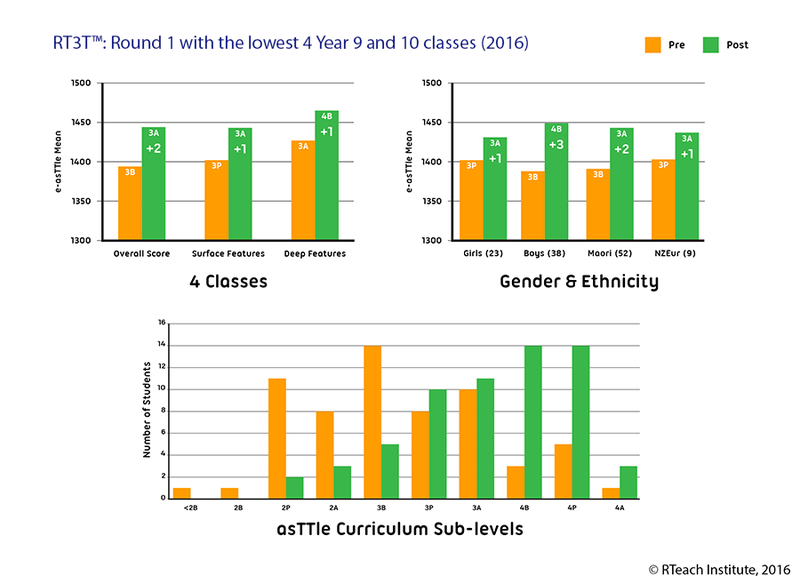Acceleration Leap for Year 9–10 with Reciprocal Teaching – RT3T™
Q. What can we expect after a trained RT3T™ team coaches our Year 9s and 10s for 7.5 hours?
A1. An entire secondary cohort in a large Pasifika secondary school achieved a 'delayed acceleration leap'. They scored huge gains when re-tested 8 or more months after the completion of RT3T™ (Reciprocal Teaching 3 Track) coaching. This school is typical of many NZ secondary schools, which usually display an ongoing ‘plateau’ (i.e. minimal or no progress) in longitudinal literacy data throughout the secondary school years.

Bar graph with all Year 9 students in 12 classes (A to L) tested at Beginning of Year (BOY), Mid Year (MY) and End of Year (EOY) while in Year 9, and again at Beginning of Year (BOY) when they started in Year 10.
The acceleration leap is consistent with cutting edge research on collaborative teaching from Cambridge, and fits with the sustained impact seen two years later in NCEA data from one of our largest secondary schools.
A2. The four lowest year 9 and year 10 classes in a large secondary school scored a 'seismic shift'. The four classes comprised predominantly Māori students. The students averaged two years’ growth after completing RT3T™ coaching.

Tags:
graphs
accelerated learning
multicultural
2016
EasTTle
literacy
secondary school
reciprocal reading
high school
collaborative learning
RT3T
Pacific
reciprocal teaching
reading
Maori
